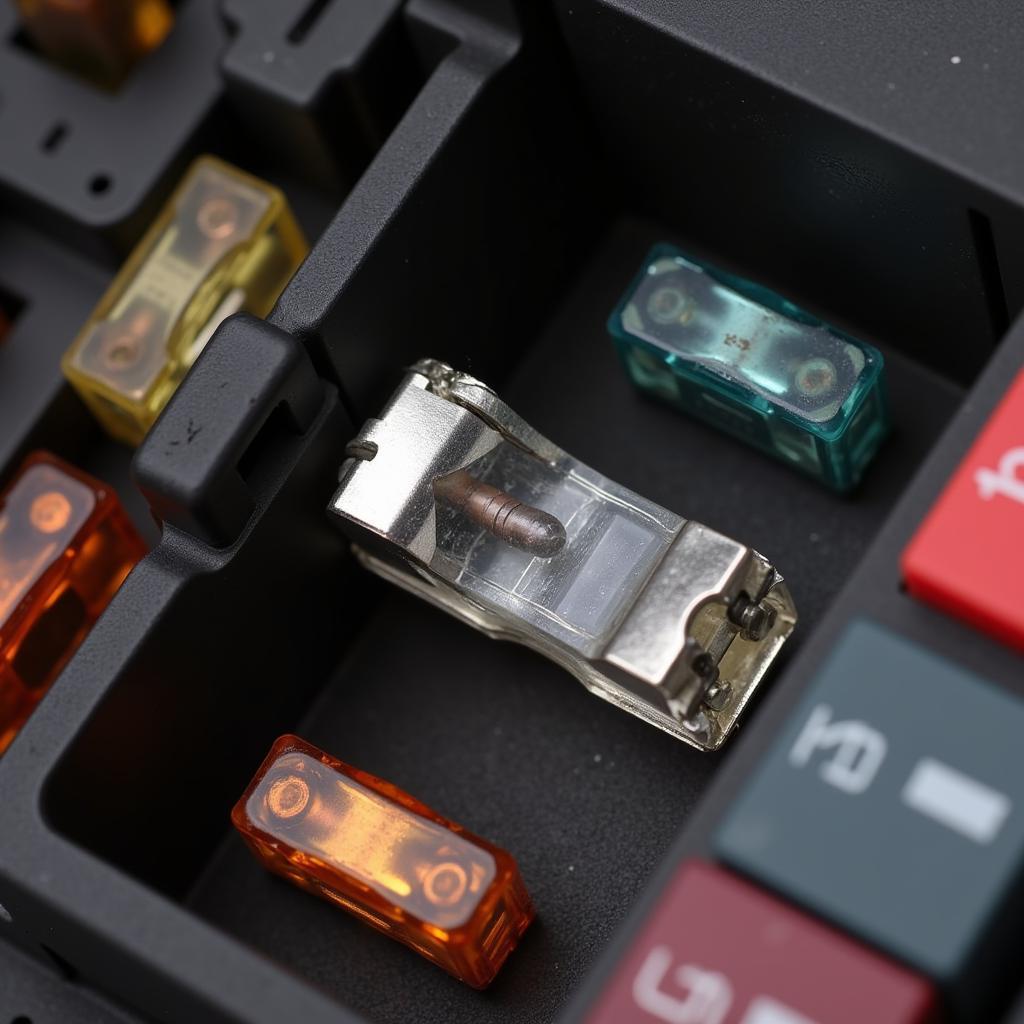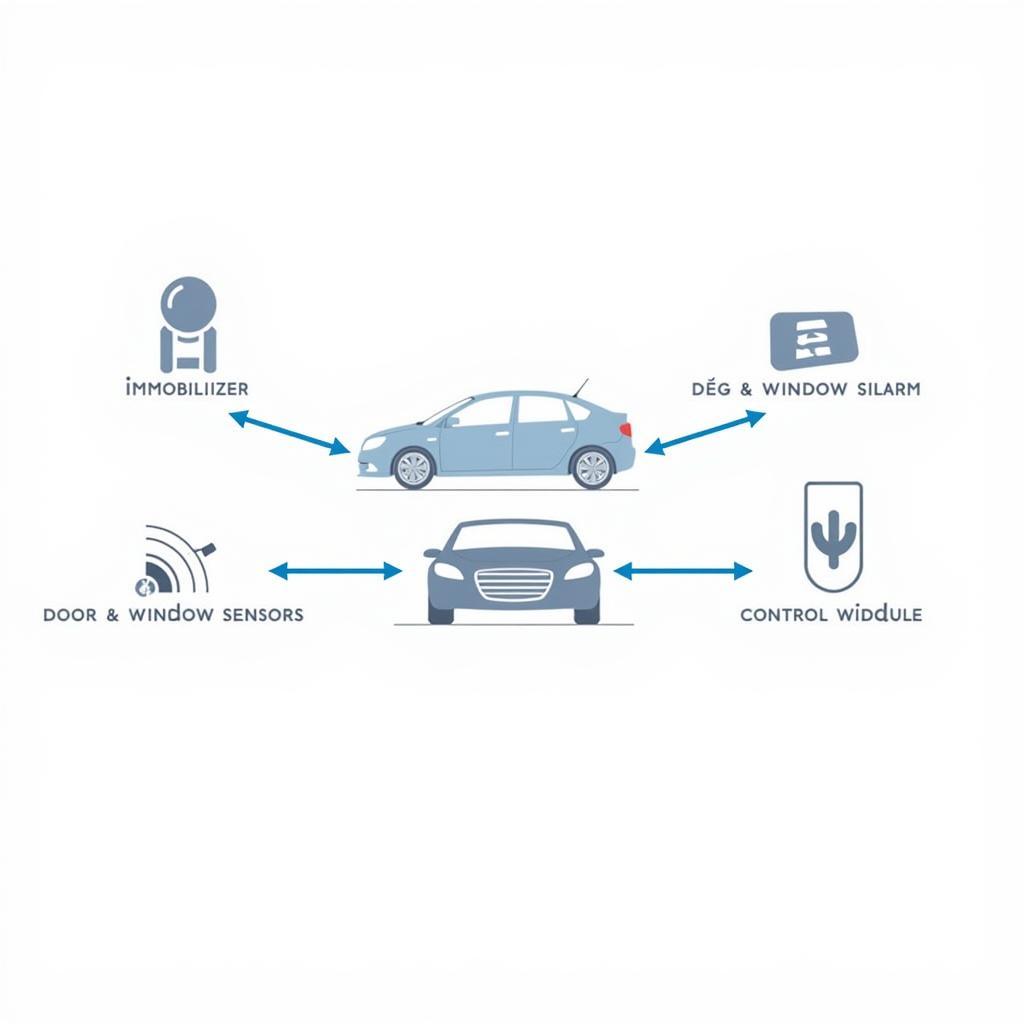Understanding the intricate workings of a vehicle’s anti-theft system can be challenging. Many drivers wonder, does the anti-theft system have a fuse? The short answer is: yes, often it does. However, simply checking or replacing a fuse rarely solves complex anti-theft issues. This article delves deep into the relationship between fuses and anti-theft systems, offering practical advice for troubleshooting and outlining when professional help is necessary.
If your car’s anti-theft system is acting up, checking related fuses is a good preliminary step. However, anti-theft systems are sophisticated networks involving multiple components, not just a single fuse. They’re designed to protect your vehicle from theft, and this complexity necessitates a more nuanced approach to diagnostics. Learn more about warning lights on your SEAT with this resource on SEAT dashboard warning lights.
Locating and Checking Anti-Theft System Fuses
Most vehicle owner’s manuals identify the location of the anti-theft system fuse(s). Typically, they’re found in the fuse box under the dashboard or under the hood. Once located, inspect the fuse visually for a broken filament or use a multimeter to confirm continuity.
Common Signs of a Blown Anti-Theft Fuse
Some common indicators of a blown anti-theft fuse include:
- Car not starting
- Rapid flashing of dashboard lights
- Horn honking erratically
- Inability to lock/unlock doors remotely
 Blown Anti-Theft Fuse Inspection
Blown Anti-Theft Fuse Inspection
While a blown fuse might seem like the culprit, it’s crucial to understand that it’s often a symptom of a larger problem. Simply replacing the fuse might temporarily fix the issue, but the underlying cause remains unaddressed.
Beyond the Fuse: Understanding the Complexity of Anti-Theft Systems
Modern anti-theft systems incorporate various components, including:
- Immobilizer: Prevents the engine from starting without the correct key.
- Alarm Siren: Sounds an alert when the system is triggered.
- Door and Window Sensors: Detect unauthorized entry.
- Control Module: The “brain” of the system, coordinating all functions.
 Components of a Car Anti-Theft System
Components of a Car Anti-Theft System
A problem with any of these components can trigger a chain reaction, leading to a blown fuse. For specific warning light information on the SEAT Arona, check this link: SEAT Arona dashboard warning lights.
When to Seek Professional Help
If replacing the fuse doesn’t resolve the issue, or if the fuse blows again shortly after replacement, it’s time to consult a qualified automotive technician. They have the specialized diagnostic tools and expertise to pinpoint the root cause of the problem.
“A recurring blown fuse is a red flag,” says automotive electrical systems expert, David Miller. “It suggests a short circuit or another electrical fault that requires professional attention.”
Troubleshooting Anti-Theft System Issues
Before rushing to a mechanic, there are a few things you can try:
- Check the battery voltage. A weak battery can sometimes cause erratic behavior in the anti-theft system.
- Inspect the wiring and connections related to the anti-theft system. Look for any signs of damage, corrosion, or loose connections. For those driving a SEAT Mii, this resource on SEAT Mii dashboard warning lights can be helpful.
- Try using your spare key. If the problem is with the key’s transponder chip, the spare key might work.
“Don’t underestimate the importance of a healthy battery,” advises Sarah Chen, an experienced auto electrician. “A weak battery can cause all sorts of electrical gremlins, including anti-theft system malfunctions.” Check out SEAT Leon 2006 dashboard warning lights for more information.
Conclusion
So, does the anti-theft system have a fuse? Yes, it usually does. But addressing anti-theft problems often requires going beyond a simple fuse check. Understanding the complexity of these systems and knowing when to seek professional help is essential for effectively resolving issues and keeping your vehicle secure. Don’t forget to explore SEAT car dashboard warning lights for a comprehensive guide.

